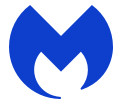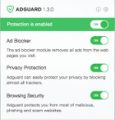What is KernelReproduce
KernelReproduce is an adware application that targets Mac computers. Adware is something which you should be aware of even if you use Safari, Google Chrome or other modern internet browser. This is the name given to apps that have been created to display unwanted ads and pop up commercials onto the web browser screen. The reason for adware’s existence is to make revenue for its creator. The ads caused by adware software are sometimes in the form of a in-text link, popup or sometimes in an unclosable window.
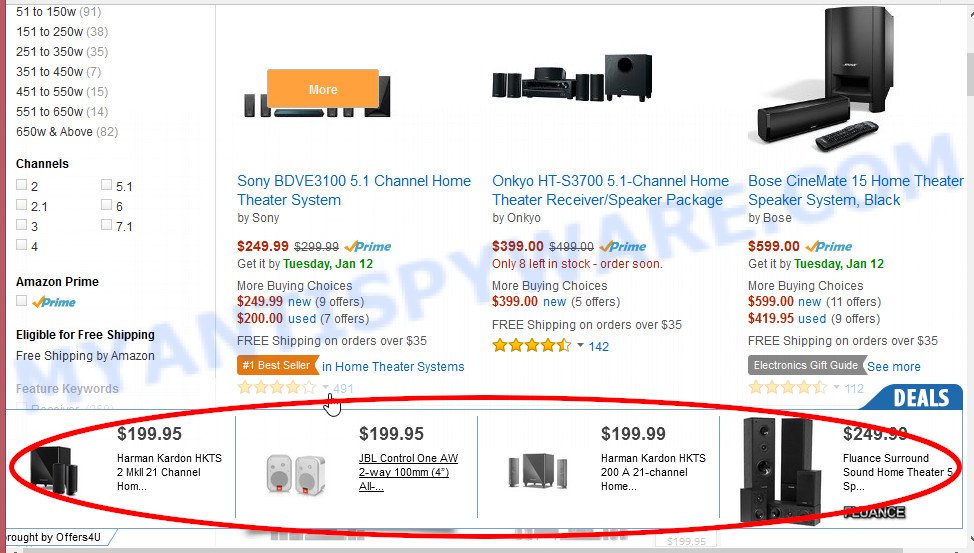
Unwanted ads
Even worse, the KernelReproduce adware has the ability to collect lots of confidential information about you such as what web-pages you are opening, what you are looking for the Net and so on. This sensitive info, later, may be used for marketing purposes.
How does KernelReproduce get on your MAC system
Most often, adware is bundled within the installation packages from file sharing and torrents web-sites. So, install free applications is a a good chance that you will find a bundled adware. If you don’t know how to avoid it, then use a simple trick. During the setup, choose the Custom or Advanced setup type. Next, click ‘Decline’ button and clear all checkboxes on offers that ask you to install bundled apps. Moreover, please carefully read Term of use and User agreement before installing any programs or otherwise you may end up with another unwanted application on your MAC such as this adware.
Threat Summary
| Name | KernelReproduce |
| Type | adware software, PUP (potentially unwanted program), Mac malware, Mac virus |
| Detection Names | ApplicUnwnt, Adware.MAC.Generic, Program:MacOS/Vigram.A, Osx.Adware.Cimpli, Trojan-Downloader.OSX.Adload, Adware/Adload!OSX, OSX.Trojan.Gen and MacOS.Agent-MT |
| Distribution | Free software installers, dubious popup ads, torrent downloads and fake updaters |
| Symptoms | Every time you perform an Internet search, your internet browser is redirected to another website, advertising pop ups won’t go away, your MAC OS starts automatically installing unwanted apps, unwanted web browser toolbars, your web browser homepage has replaced and you cannot modify it back, your web-browser slows to a crawl. |
| Removal | KernelReproduce removal guide |
How to Remove KernelReproduce adware (removal steps)
Adware is a form of malware that you might have difficulty in removing it from your MAC. Happily, you’ve found the effective KernelReproduce removal steps in this article. Both the manual removal solution and the automatic removal solution will be provided below and you can just choose the one that best for you. If you have any questions or need help then type a comment below. Read this manual carefully, bookmark it or open this page on your smartphone, because you may need to close your web-browser or restart your MAC.
To remove KernelReproduce, execute the steps below:
- Remove unwanted profiles on Mac device
- Uninstall KernelReproduce associated software by using the Finder
- Remove KernelReproduce related files and folders
- Scan your Mac with MalwareBytes
- Remove KernelReproduce from Safari, Chrome, Firefox
- How to stay safe online
Remove unwanted profiles on Mac device
KernelReproduce can install a configuration profile on the Mac system to block changes made to the browser settings. Therefore, you need to open system preferences, find and delete the profile installed by the adware.
Click the System Preferences icon ( ![]() ) in the Dock, or choose Apple menu (
) in the Dock, or choose Apple menu ( ![]() ) > System Preferences.
) > System Preferences.
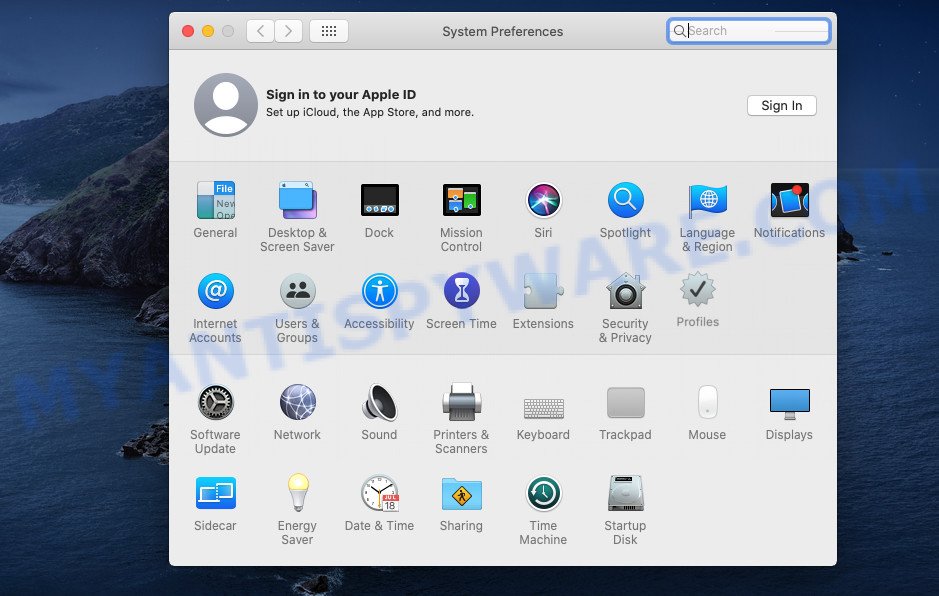
In System Preferences, click Profiles, then select a profile related to KernelReproduce.
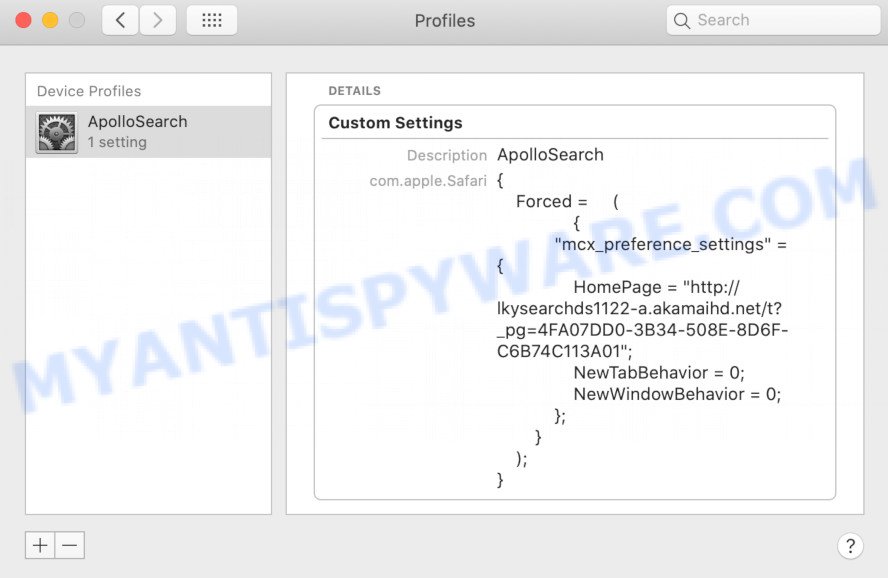
Click the minus button ( – ) located at the bottom-left of the Profiles screen to remove the profile.
Note: if you do not see Profiles in the System Preferences, that means there are no profiles installed on your Mac computer, which is normal.
Uninstall KernelReproduce associated software by using the Finder
Check the list of installed software on your Apple computer and delete all unknown and recently installed apps. If you see an unknown program with incorrect spelling or varying capital letters, it have most likely been installed by malware and you should clean it off first with malicious software removal utility such as MalwareBytes AntiMalware.
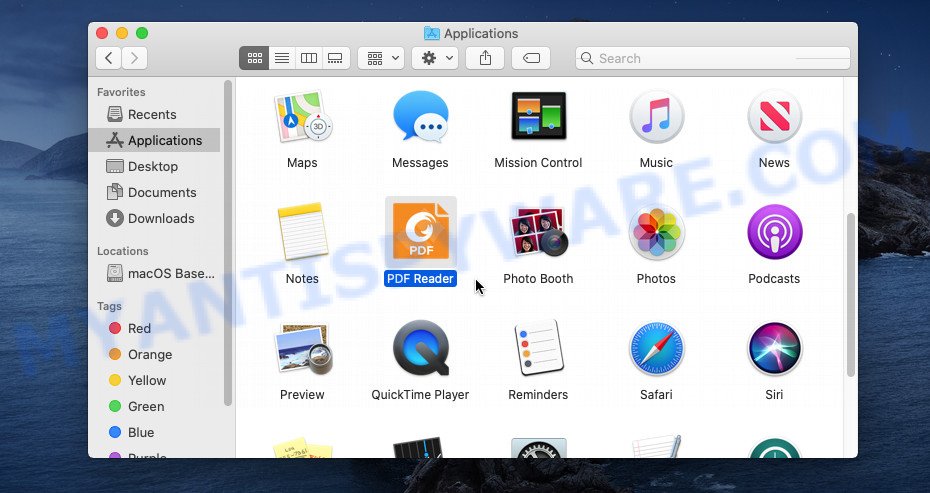
- Open the Finder.
- Click “Applications”.
- It will display a list of all apps installed on the machine.
- Scroll through the all list, and uninstall dubious and unknown applications. Pay maximum attention to the program you installed last.
- Drag the dubious program from the Applications folder to the Trash.
- Empty Trash.
Remove KernelReproduce related files and folders
Now you need to try to find KernelReproduce related files and folders, and then delete them manually. You need to look for these files in certain directories. To quickly open them, we recommend using the “Go to Folder…” command.
KernelReproduce creates several files, these files must be found and removed. Below is a list of files associated with this unwanted application.
- /Library/LaunchDaemons/com.KernelReproduce.system.plist
- ~/Library/LaunchAgents/com.KernelReproduce.service.plist
- /Library/Application Support/.(RANDOM)/System/com.KernelReproduce.system
- ~/Library/Application Support/.(RANDOM)/Services/com.KernelReproduce.service.app
Some files created by KernelReproduce are hidden from the user. To find and delete them, you need to enable “show hidden files”. To do this, use the shortcut CMD + SHIFT + . Press once to show hidden files and again to hide them. There is another way. Click Finder -> Applications -> Utilities -> Terminal. In Terminal, paste the following text: defaults write com.apple.finder AppleShowAllFiles YES

Press Enter. Hold the ‘Option/alt’ key, then right click on the Finder icon in the dock and click Relaunch.
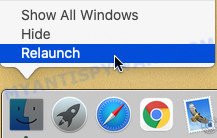
Click on the Finder icon. From the menu bar, select Go and click “Go to Folder…”. As a result, a small window opens that allows you to quickly open a specific directory.

Check for KernelReproduce generated files in the /Library/LaunchAgents folder

In the “Go to Folder…” window, type the following text and press Go:
/Library/LaunchAgents
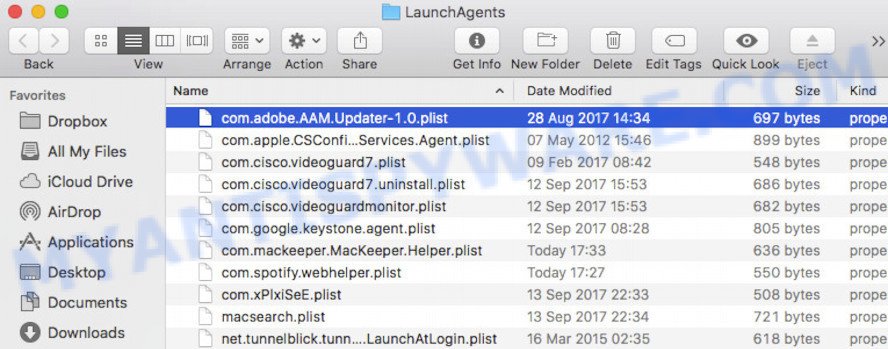
This will open the contents of the “/Library/LaunchAgents” folder. Look carefully at it and pay special attention to recently created files, as well as files that have a suspicious name. Move all suspicious files to the Trash. A few examples of files: com.net-preferences.plist, com.machelper.plist, search.plist, com.KernelReproduce.service.plist, installapp.plist, com.google.defaultsearch.plist, and macsearch.plist. Most often, browser hijackers, adware and potentially unwanted programs create several files with similar names.
Check for KernelReproduce generated files in the /Library/Application Support folder

In the “Go to Folder…” window, type the following text and press Go:
/Library/Application Support
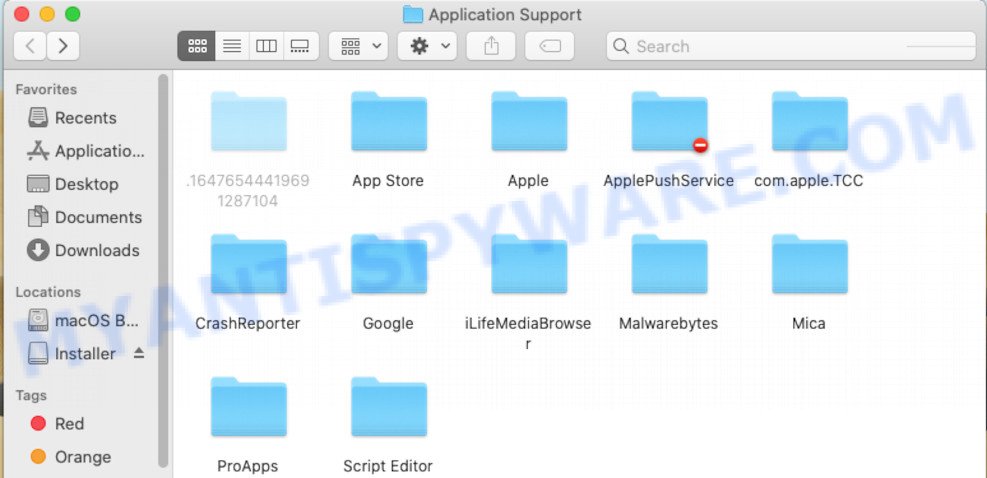
This will open the contents of the “Application Support” folder. Look carefully at its contents, pay special attention to recently added/changed folders and files. Check the contents of suspicious folders, if there is a file with a name similar to com.KernelReproduce.system, then this folder must be deleted. Move all suspicious folders and files to the Trash.
Check for KernelReproduce generated files in the “~/Library/LaunchAgents” folder

In the “Go to Folder…” window, type the following text and press Go:
~/Library/LaunchAgents

Proceed in the same way as with the “/Library/LaunchAgents” and “/Library/Application Support” folders. Look for suspicious and recently added files. Move all suspicious files to the Trash.
Check for KernelReproduce generated files in the /Library/LaunchDaemons folder
In the “Go to Folder…” window, type the following text and press Go:
/Library/LaunchDaemons

Carefully browse the entire list of files and pay special attention to recently created files, as well as files that have a suspicious name. Move all suspicious files to the Trash. A few examples of files to be deleted: com.search.system.plist, com.KernelReproduce.system.plist, com.macsearch.system.plist, com.machelper.system.plist and com.installapp.system.plist. In most cases, potentially unwanted programs, browser hijackers and adware software create several files with similar names.
Scan your Mac with MalwareBytes
If you’re still having issues with the KernelReproduce removal or just wish to check your Apple computer occasionally for adware software and other malware, then download MalwareBytes AntiMalware. It is free for home use, and identifies and removes various undesired programs that attacks your MAC or degrades MAC performance. MalwareBytes AntiMalware can remove toolbars, PUPs, browser hijackers and adware software as well as malware, including ransomware and trojans.
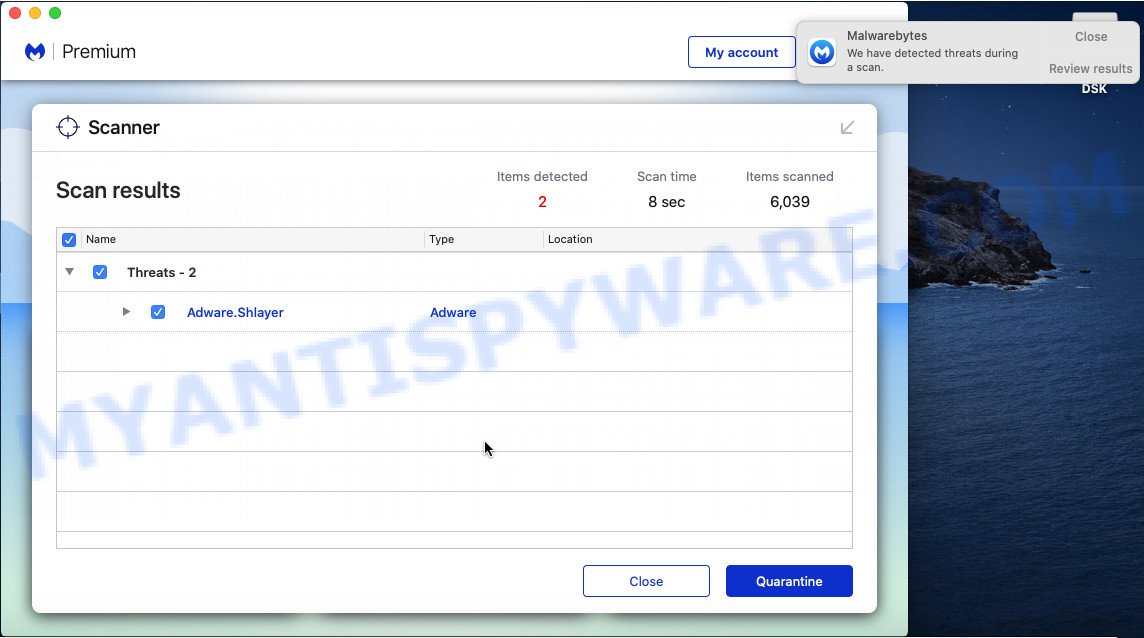
- Please go to the following link to download the latest version of MalwareBytes AntiMalware for Mac OS.
Malwarebytes Anti-malware (Mac)
21024 downloads
Author: Malwarebytes
Category: Security tools
Update: September 10, 2020
- When downloading is complete, close all applications and windows on your MAC OS. Open a folder in which you saved it. Run the downloaded file and follow the prompts.
- Click the “Scan” button . MalwareBytes Anti-Malware application will scan through the whole computer for the KernelReproduce . This task can take some time, so please be patient. While the MalwareBytes AntiMalware utility is scanning, you can see how many objects it has identified as being affected by malware.
- After that process is finished, MalwareBytes Anti-Malware will open a scan report. Review the results once the utility has complete the system scan. If you think an entry should not be quarantined, then uncheck it. Otherwise, simply click “Quarantine”.
Remove KernelReproduce from Safari, Chrome, Firefox
If you have ‘KernelReproduce adware’ removal problem, then remove unwanted plugins can help you. In the steps below we’ll show you the solution to delete malicious plugins without reinstall. This will also allow to remove KernelReproduce adware from your web browser.
You can also try to delete KernelReproduce adware by reset Google Chrome settings. |
If you are still experiencing problems with KernelReproduce removal, you need to reset Firefox browser. |
|
How to stay safe online
One of the worst things is the fact that you cannot block all harmful web-sites using only built-in Microsoft Windows capabilities. However, there is a program out that you can use to block unwanted internet browser redirects, ads and popups in any modern browsers including Firefox, Chrome and Safari. It is named Adguard and it works very well.
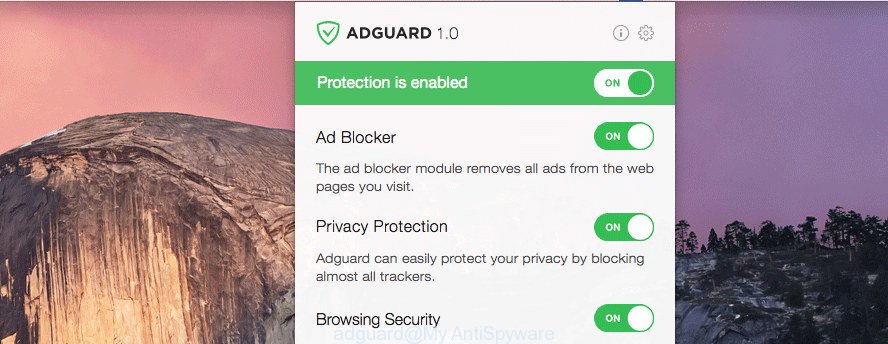
AdGuard can be downloaded from the following link.
3782 downloads
Author: © Adguard
Category: Security tools
Update: January 17, 2018
When downloading is finished, start the downloaded file. You will see the “Setup Wizard” screen. Follow the prompts.
Each time, when you start your Apple Mac, AdGuard will run automatically and stop annoying pop-up ads, block malicious and misleading websites.
Finish words
We suggest that you keep MalwareBytes Anti-Malware (to periodically scan your MAC for new adware and other malware) and AdGuard (to help you stop intrusive popup ads and harmful webpages). Moreover, to prevent any adware, please stay clear of unknown and third party programs.
If you need more help with KernelReproduce related issues, go to here.
